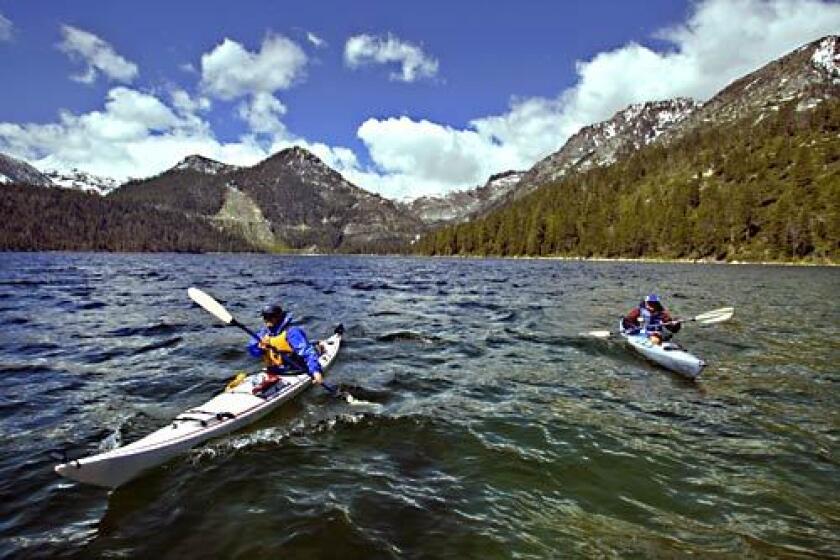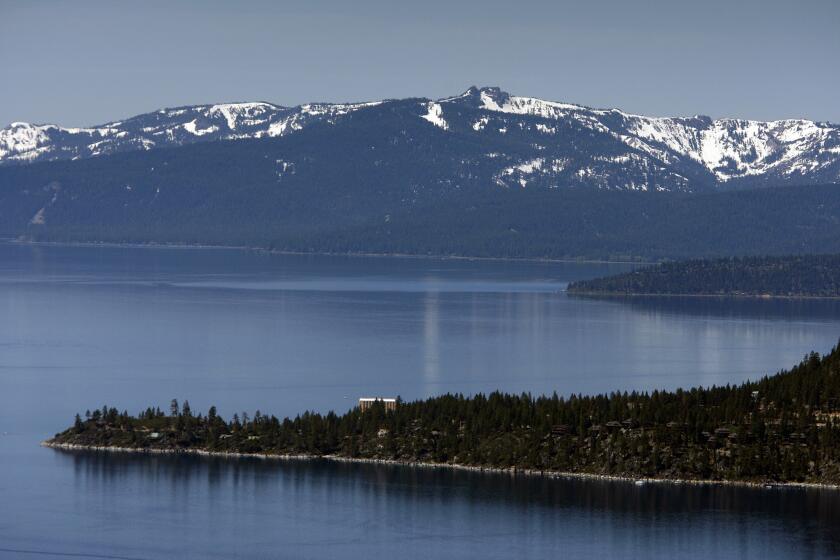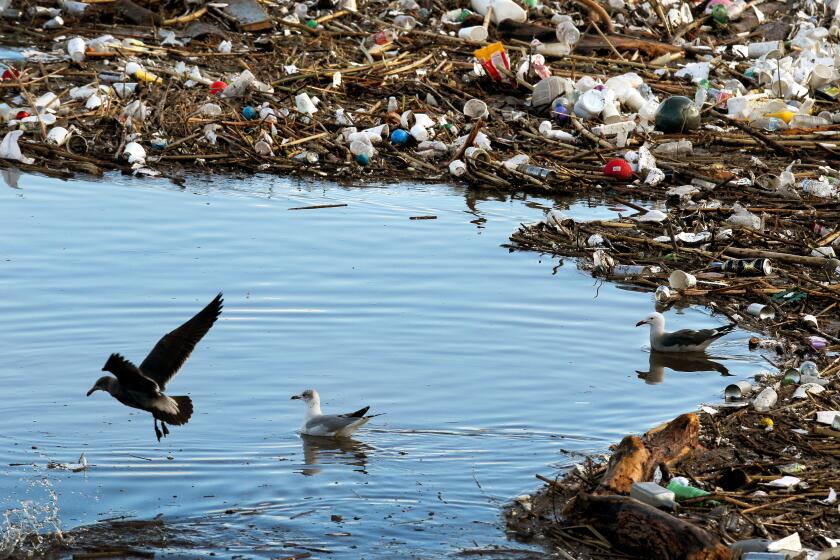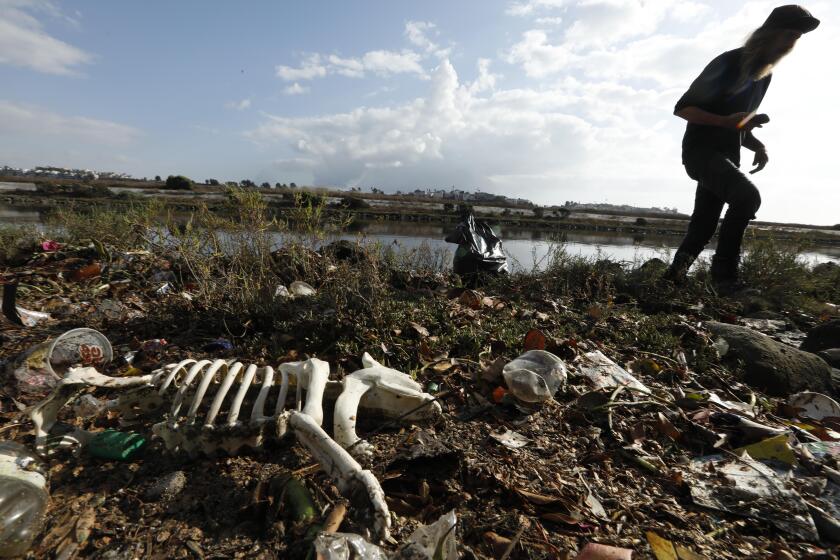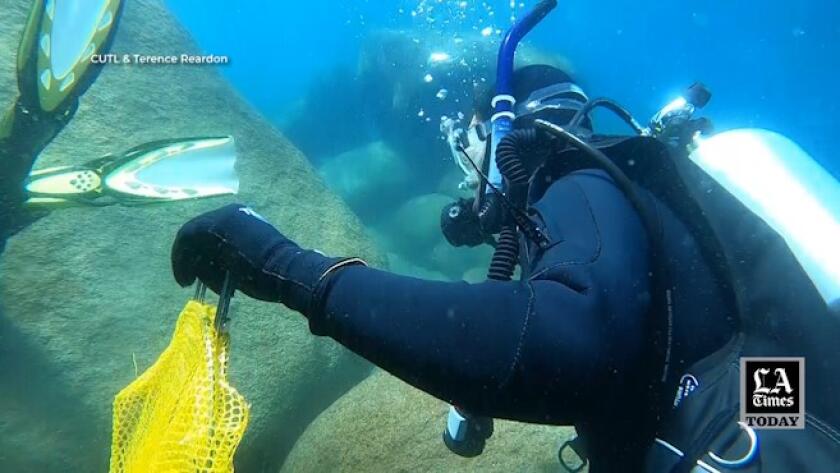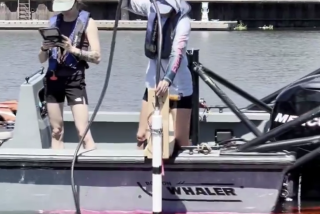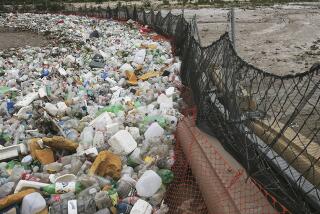This group decided to clean up Lake Tahoe. They found more than 25,000 pounds of submerged trash
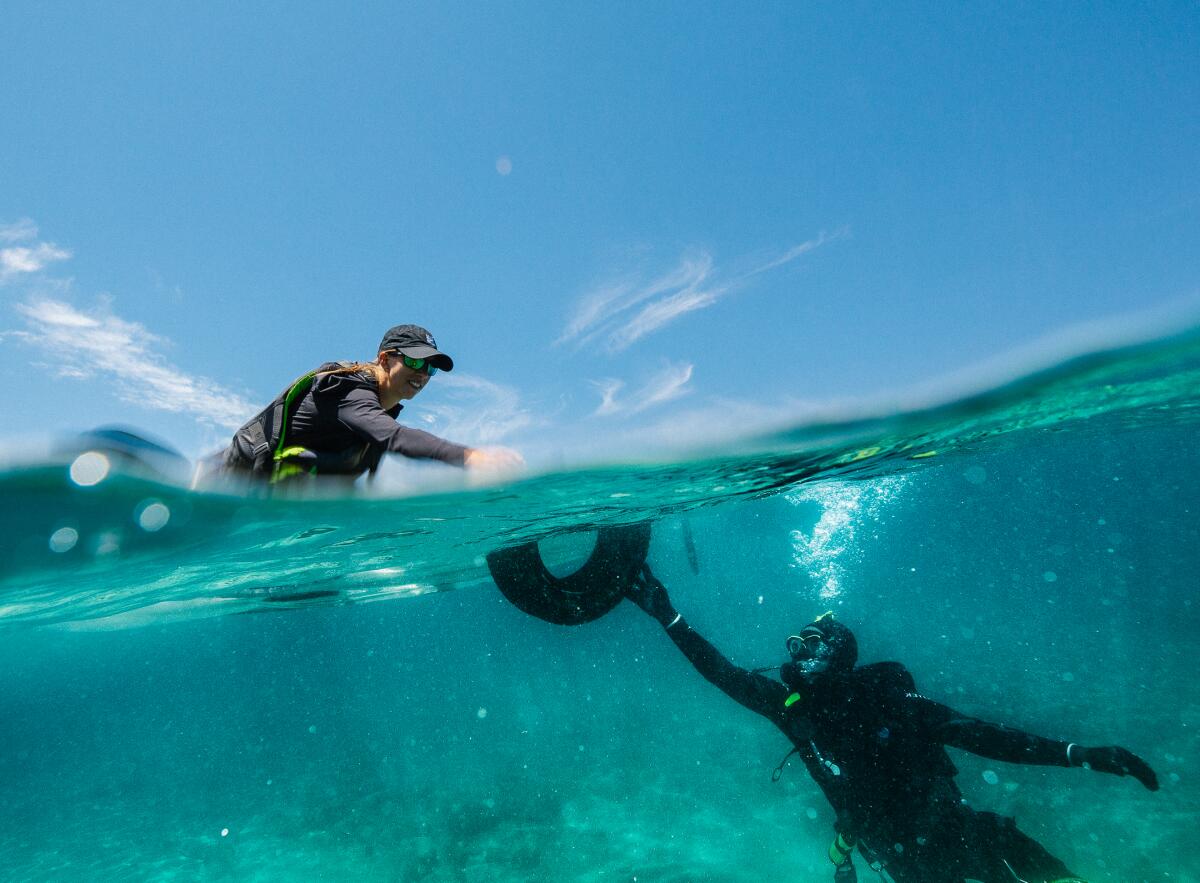
- Share via
Lake Tahoe, known for its picturesque views, is also home to a major garbage problem: A team of scuba divers this week collected more than 25,000 pounds of trash from its deep-blue waters.
Colin West started the ambitious project in May 2021. A friend told him about the 600 pounds of litter that he had pulled from the lake, and West, 35, decided to dive deep to add to the total.
The local resident, who regularly participated in beach cleanups, founded a nonprofit called Clean Up the Lake and started a “72-mile scuba clean-up” of Lake Tahoe.
“We navigated the entire circumference of the lake,” he said.
Among the “25,281 pounds” of submerged trash, he said, were “over 4,500 different aluminum cans, more than 280 different pairs of sunglasses, cellphones and plastic bottles.”
I’d be more surprised if the high Sierra lake didn’t have traces of microplastic.
Among unexpected items were what looked like engagement rings, 1980s Nikon film cameras, entire lampposts, “no littering” signs and pieces of broken-down boats and engine blocks.
“They are heavier pieces of trash that we need to go back for,” said West of more than 400 larger items the team found and marked.
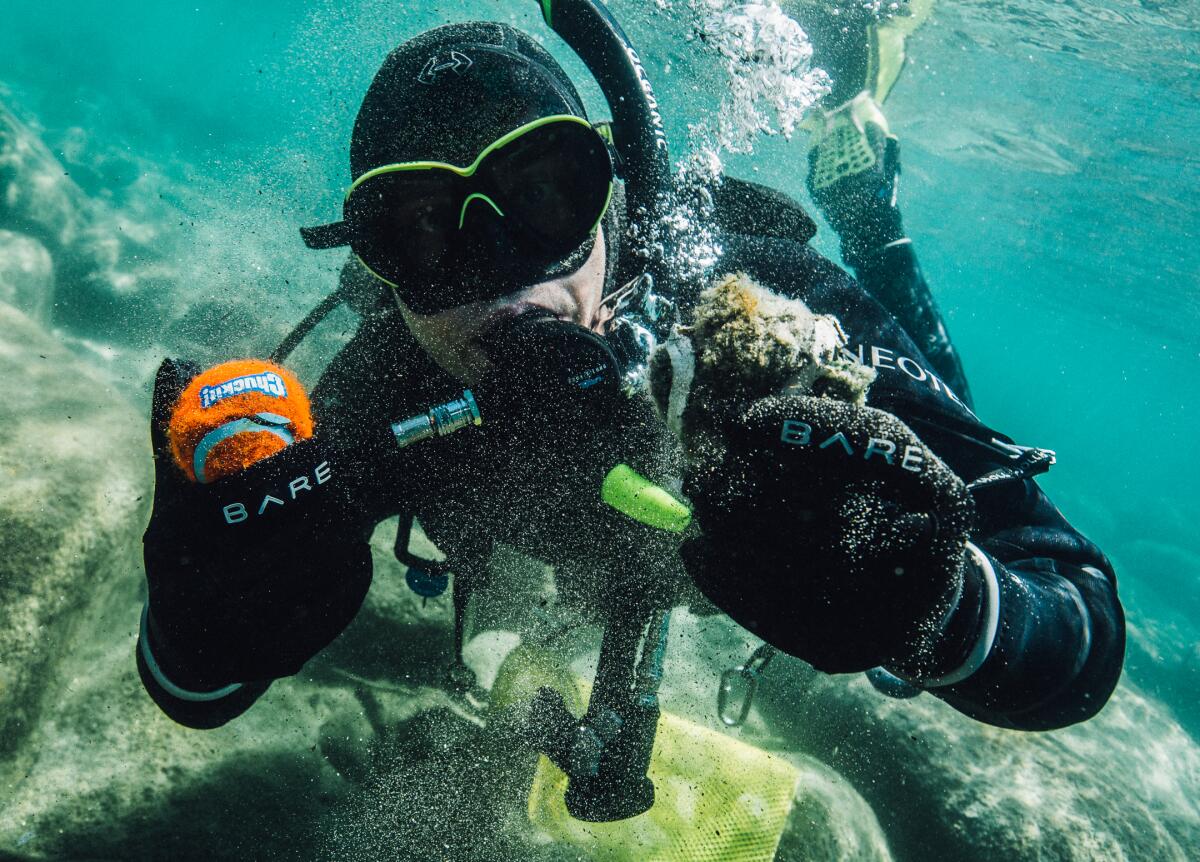
Lake Tahoe is a scenic mountain lake along the border of California and Nevada. A large freshwater lake, it is a renowned picnic spot due to its beaches and ski resorts. Nearly 2 million years old, it is among the 20 oldest lakes in the world, reportedly receiving nearly 15 million visitors annually.
“The majority of the litter we have pulled out is simply from us human beings having a presence,” West said. “There is construction debris, there are beer cans or sunglasses or hats that fly off boats. There is intentional litter, of course. But a majority of it is accidental. We are all part of the problem.”
Scientists have detected microplastic pollution in the waters of Lake Tahoe for the first time. Now they are trying to determine its source and potential harm to the lake.
The cleanup took a team of 136 volunteers guided by six staff members.
“We did two to three days per week and two to three hours under water on each of those days,” West said. “But in order to do those two to three hours a day underwater, there is a lot of work on the surface.”
Weather, West said, was the biggest challenge.
On the last day of the project, West said, it was a sunny day when they dove in, but they walked out in the middle of a snowstorm.
“It’s hard to make any kind of set plan,” he said. “We had to monitor wind, smoke, snow and lightning, among other things. We had safety protocols for each one of them in place. Our director of operations had become a weatherman.”
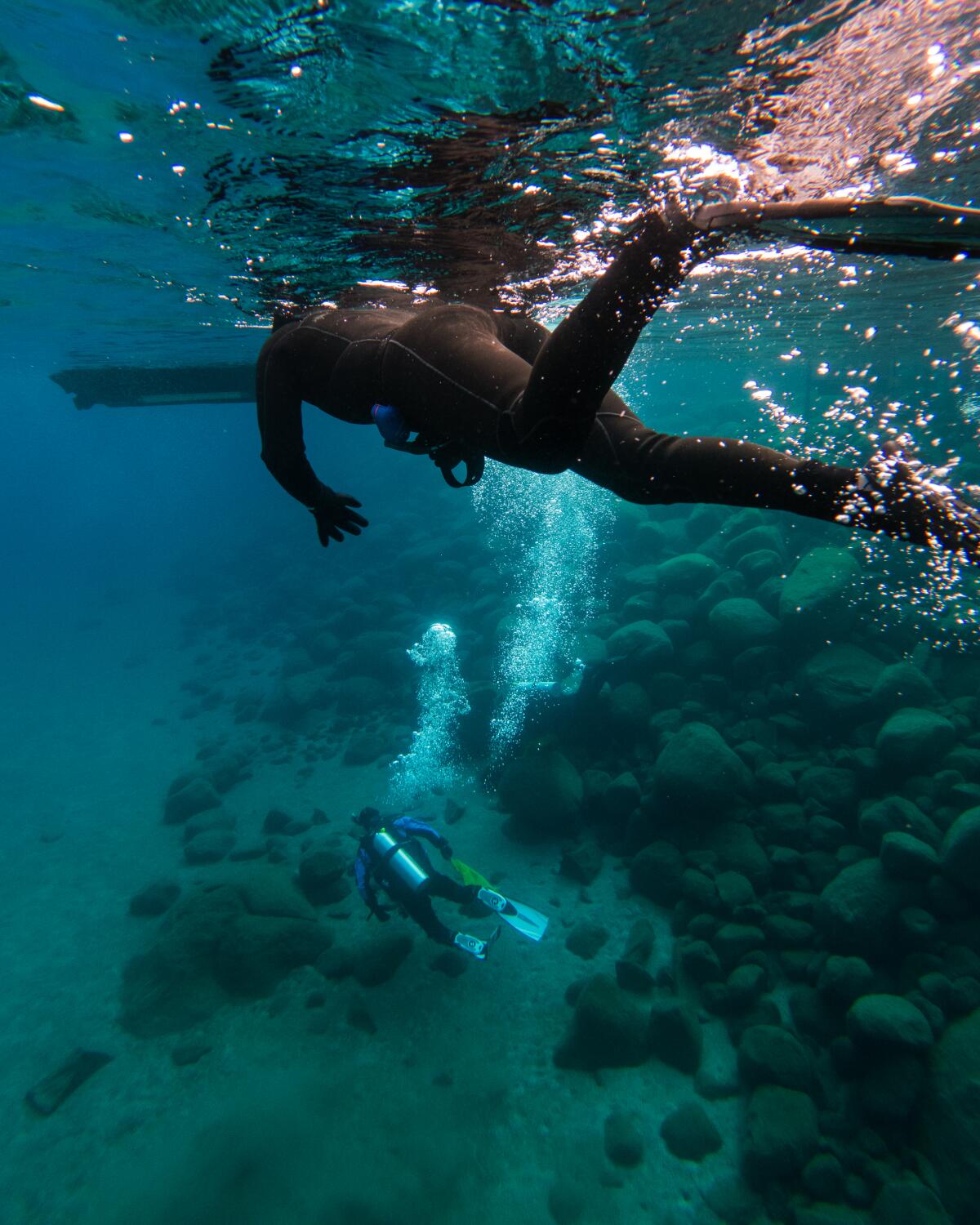
Though the trash would indicate otherwise, the shore of Lake Tahoe — 22 miles long and 12 miles wide — is closely monitored. The Times reported that “federal, state and local governments have spent more than $2 billion over the last six decades buying land and developing erosion control and wetlands restoration projects.”
“Turning up this stuff at a world-famous nearly pristine mountain lake may move people to take action,” Zack Bradford, senior science analyst at the League to Save Tahoe, told The Times in August 2019.
Environmentalists and industry are at odds over a November ballot initiative that would reduce single-use plastics and polystyrene food containers.
Two years later, Clean Up the Lake did.
West, who worked as a filmmaker for a decade, making commercials and documentaries for the wine industry, wanted to do more meaningful work.
“I really wanted to do something that made a difference and helped the environment,” he said.
For that, he needed funds. West said that local company Tahoe Blue Vodka donated $100,000, and the organization received other grants and help from the community.
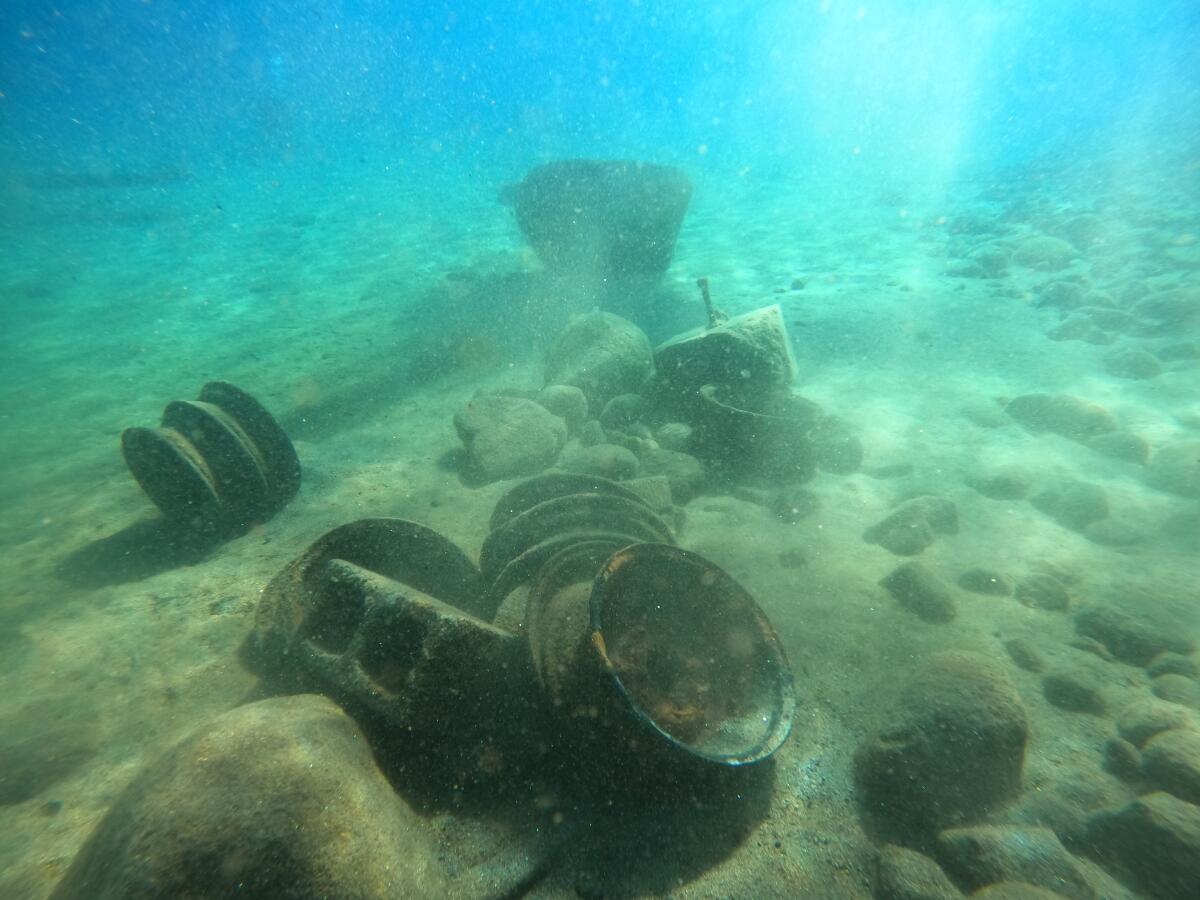
However, their work may have just begun.
This is just a snapshot of one lake, said Jennifer Savage of Surfrider — a nonprofit fighting for plastic reduction in marine environments and coastal preservation.
“It is playing out all over the country,” said Savage, the senior manager of the organization’s plastic pollution initiative. “Every bit of trash creates problems for marine life.”
Atty. Gen. Rob Bonta claims Exxon Mobil and other corporations have perpetuated the ‘myth’ that recycling will solve the plastics crisis.
West is aware of that.
“We are planning a similar cleanup of the Fallen Leaf Lake located within the Tahoe basin,” he said. “We will set up a monitoring system at 20 hotspots at Lake Tahoe and Donner Lake.
“We are only getting started.”
- Share via
Watch L.A. Times Today at 7 p.m. on Spectrum News 1 on Channel 1 or live stream on the Spectrum News App. Palos Verdes Peninsula and Orange County viewers can watch on Cox Systems on channel 99.
More to Read
Sign up for Essential California
The most important California stories and recommendations in your inbox every morning.
You may occasionally receive promotional content from the Los Angeles Times.
